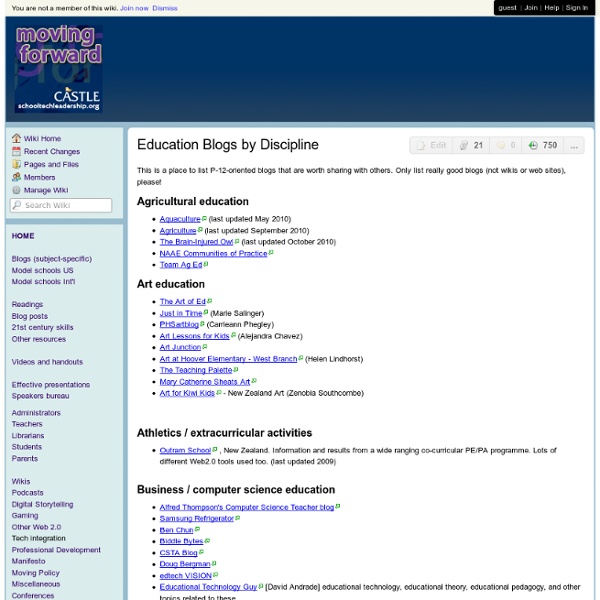



Support Blogging! - Links to School Bloggers The Top 100 Bloggers of 2013: Ten Niches, Ten Bloggers! Welcome to this compilation of the top 100 bloggers of 2013! I’m going to go through ten separate categories and take a quick look at all the best and brightest from those markets. Ranging from health and fitness to SEO and internet marketing, there’s a lot of fantastic bloggers. So without further ado, let’s dive right in! Top 10 Social Media/Internet Marketing Bloggers Jeff Bullas – Jeff Bullas is a very popular social media blogger, who runs a popular blog all about social media and online market (bet you weren’t expecting that!. Jason Keath – Jason founded Social Fresh, a social media company that has grown exponentially since its inception back in 2008. Kim Garst – Kim runs both a personal blog as well as Boom! Danny Brown – Recognized by HubSpot as the #1 marketing blog in the world, it might be worth listening to what Danny has to say when it comes to Internet Marketing. Stanford Smith – Mr. Top 10 SEO Bloggers
Active learning Active learning is a model of instruction that focuses the responsibility of learning on learners. It was popularized in the 1990s by its appearance on the Association for the Study of Higher Education (ASHE) report (Bonwell & Eison 1991). In this report they discuss a variety of methodologies for promoting "active learning". Active learning exercises[edit] Bonwell and Eison (1991) suggested learners work collaboratively, discuss materials while role-playing, debate, engage in case study, take part in cooperative learning, or produce short written exercises, etc. Examples of "active learning" activities include A class discussion may be held in person or in an online environment. Active learning and policy[edit] Policy may be satisfied by demonstrating the instructional effectiveness of instruction. In the past few years outcome-based education policy has begun to limit instructors to only using those techniques that have been shown to be effective. Research evidence[edit] See also[edit]
Education “When are we ever going to use this?” When I was a teacher, this was a question I heard almost daily. I would imagine that has not changed much since I left the classroom five years ago, particularly when it comes to math. Students are naturally inquisitive about what they are learning and why, as they should be. However, as teachers continually make a concerted effort to connect mathematics and common, everyday occurrences in students’ lives outside of the classroom, this question will go the way of the chalkboard. Game-based learning Students don’t just play board games like they used to, instead they look to find those same “board” game in Web-based or app format to download to a phone, tablet, etc. At the end of a long day, a tired first grade student lifts her chair, flips it over and lays the seat down on the top of her desk. Before we look at the choices a teacher has in getting the chair from the floor to the top of the desk, let’s examine what both choices have in common:
iLearn Technology Technology and Literacy in Deaf Education Phoebe — pedagogic planner ELT Blogging Survey - Reflection in Open Space After nearly three years, I'm now approaching the end of my Masters. You might call it the 'thick end' as it involves the by no means small matter of conducting research and writing a dissertation. As regular readers will know, I am researching the use of blogs by ELT teachers, focusing on how/to what extent they are used as part of reflective practice and the role the community plays in this. If you can't see the embedded survey clearly in your browser, please click here to see the full version. Free Technology for Teachers Through Deaf Eyes . Deaf Life . Technology as a Cultural Force "I was in a mainstream program. I was surrounded by hearing people. I never was segregated into a deaf classroom. My friends, in general, I would say treated me pretty good—with the exception of the cochlear implant which was really obvious. Then the remarks started to come. Rory Osbrink Technological change impacts communities in different ways. For almost one hundred years after its invention, the telephone separated deaf people from the rest of society. In 1964, Robert Weitbrecht, a deaf scientist, developed an acoustic coupler that converted sounds into text and vice versa. "It wasn't until I moved to the residential Deaf school that I started wearing the cochlear implant all the time. Summer Crider The development of the TTY mobilized deaf people and their hearing friends to work together to make telephone access available to everyone. Photo: Cochlear Implant Not all technological developments have been universally accepted by the Deaf community.
LDSE Using digital technologies to support teachersin designing effective technology-enhanced learning (TEL). We are working with practising teachers to research, and co-construct, an interactive Learning Design Support Environment (the Learning Designer) to scaffold teachers’ decision-making from basic planning to creative TEL design. Through this iterative research-design process we hope to address the above issues and build the means by which the teaching community can collaborate further on how best to deploy TEL. We aim to lower the TEL threshold so that the majority of teachers can engage with it in a way that draws on good practice by others and is informed by the findings of pedagogical research, thereby optimising the benefits to their learners. Our project goals are to: Some of our our latest work involves exploring the use of pedagogical patterns as re-usable learning designs.